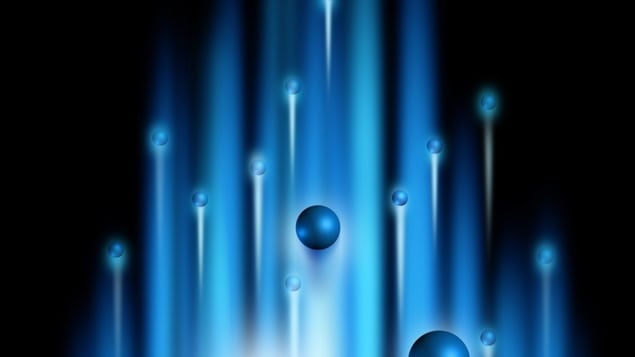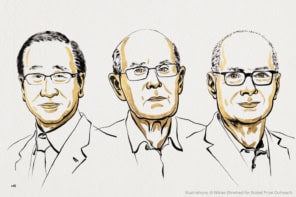
An ultrathin photocathode that is up to 10 times more efficient at producing electrons than comparable devices has been unveiled by a team led by Christopher Parzyck and Alice Galdi at Cornell University in the US. The photocathode is also 10 times faster than existing materials. The advance could benefit a wide range of instrumentation from electron microscopes to particle colliders.
When a photon of light strikes the surface of a photocathode material it can dislodge an electron in what is called the photoelectric effect. These electrons can then be gathered and focussed into beams for use in a wide range of technologies. To create more intense and higher-quality electron beams, researchers are trying to boost the efficiency of photocathodes as well as narrowing the spread in momenta of the emitted electrons and reducing the time it takes for emission to occur.
Ultrathin single crystals of semiconductors containing alkali metals should offer high efficiency, low momentum spread and short response time, but it has proven difficult to create photocathodes from such materials. This is because photocathodes are either grown as polycrystals, which are often rich in crystalline defects; or produced by activating a semiconductor surface with an alkali metal, creating a disordered material.
Molecular-beam epitaxy
To fabricate a smooth, defect-free photocathode, Parzyck and Galdi’s team instead used molecular-beam epitaxy to create ultrathin films of caesium antimonide. Ultra-pure stocks of caesium and antimony were first sublimated and then condensed onto a single-crystal silicon carbide substrate in a high vacuum. The deposition occurred one atomic layer at a time and resulted in films as thin as 4 nm. This approach ensured that the atoms in the films assumed the crystalline orientation of those in the substrate beneath – avoiding disorder.
The researchers then analysed the structure and performance of their photocathodes using a variety of techniques including high-energy electron diffraction and a combination of X-ray, ultraviolet, and angle-resolved photoemission spectroscopy. This allowed the team to characterize the both the crystal structure of the films as well as the energies, momenta, and polarizations of the photoelectrons emitted.
From this detailed analysis, the researchers found that when converting green visible light into electrons, the quantum efficiency of a 4 nm film exceeded 2%. This means that 2% of the photons absorbed by the surface resulted in the emission of an electron. They also found that the photoemission procession can take as little as 10 fs to occur, which is an order of magnitude faster than other photocathodes. This speed means that the photocathode could be used in ultra ultrafast microscopes and high time-resolution streak cameras.
The team hopes that its research could pave the way for dramatic enhancements in brightness for ultrathin photocathode electron sources, which would benefit a wide range of technologies that rely on intense and high-quality electron beams
The study is described in Physical Review Letters.



